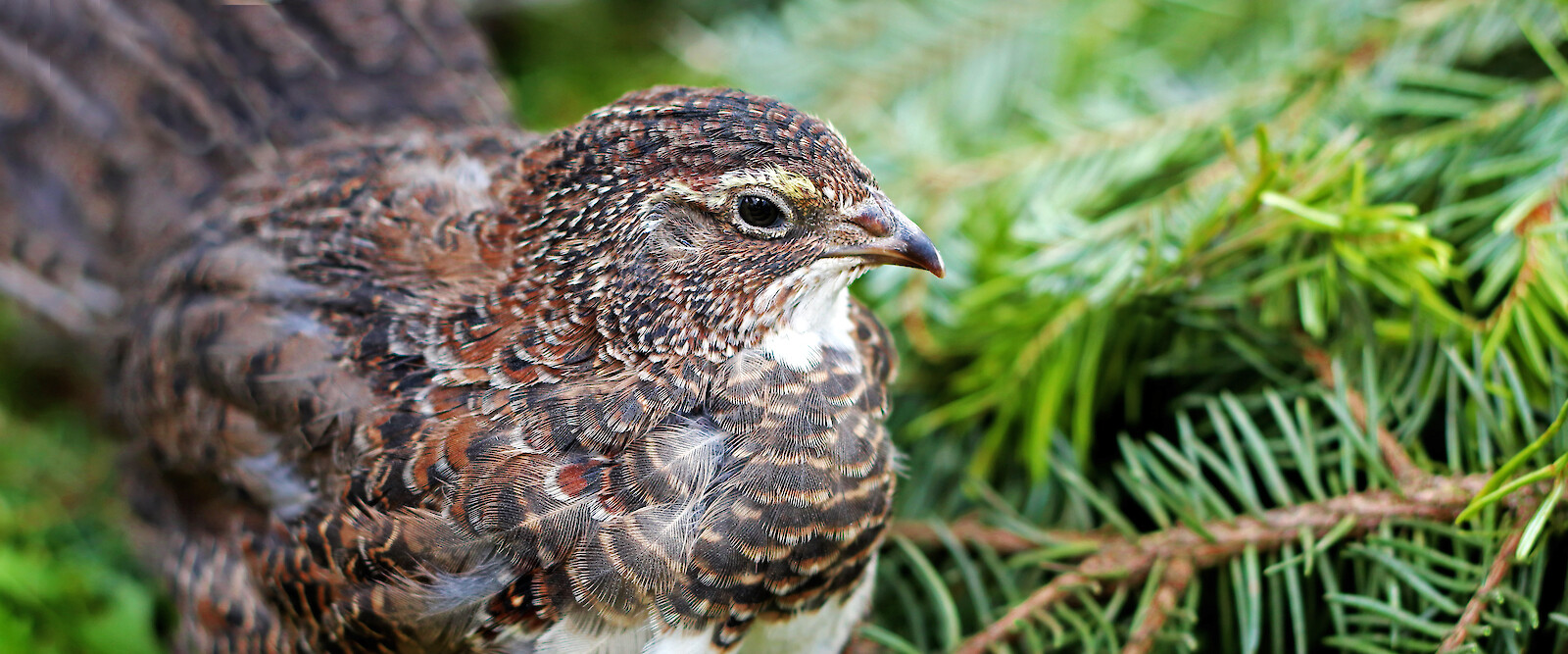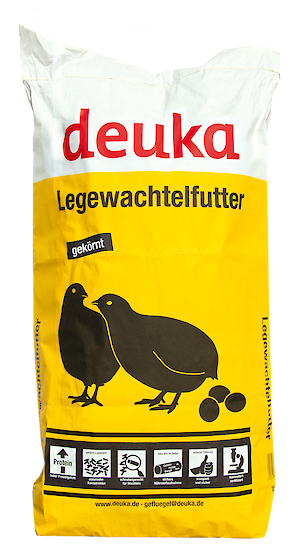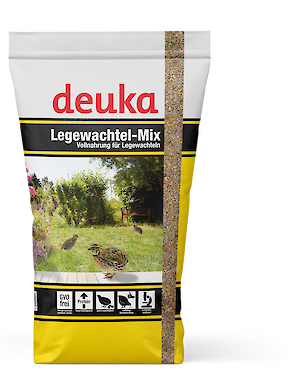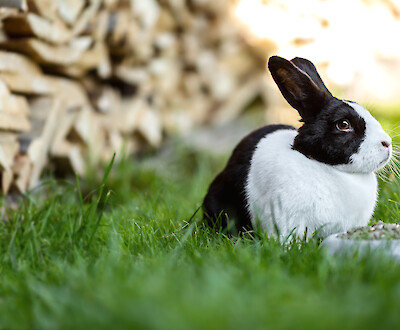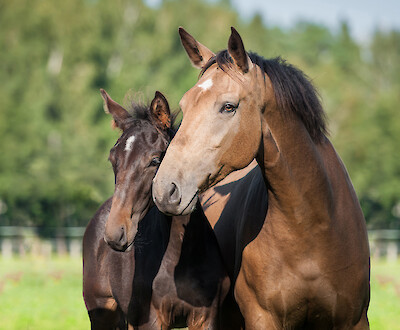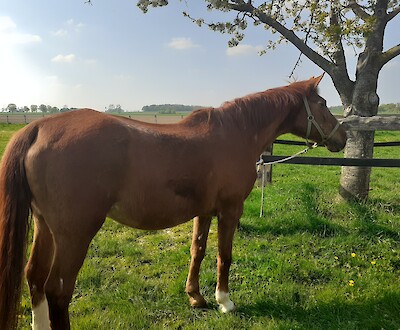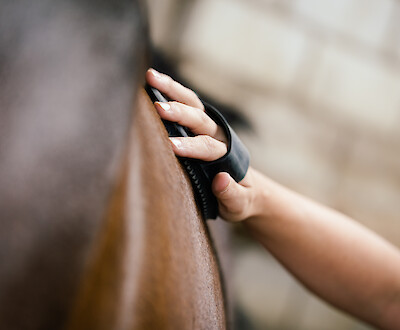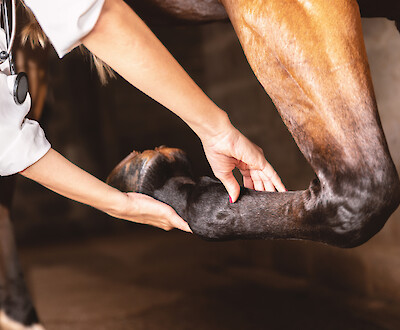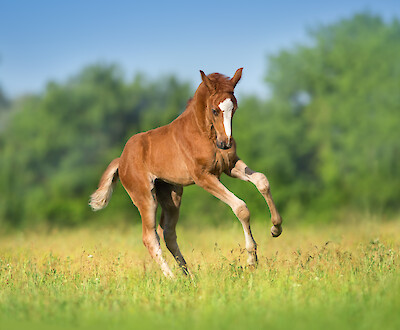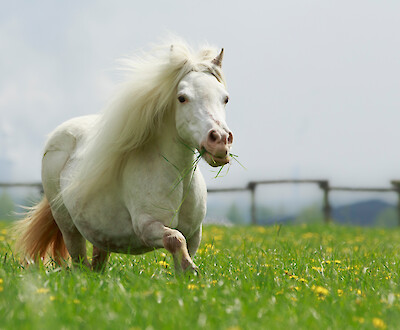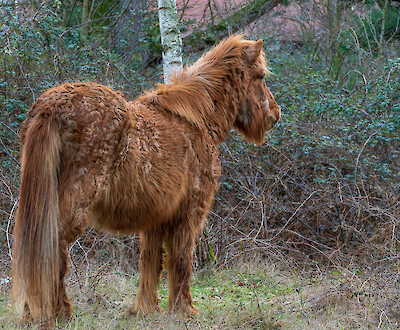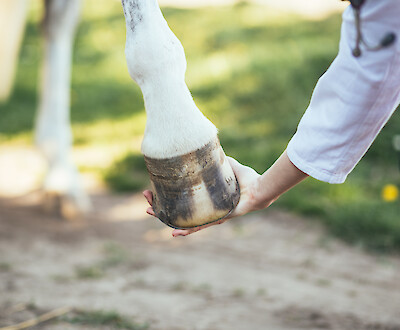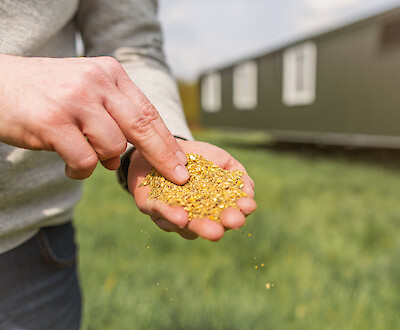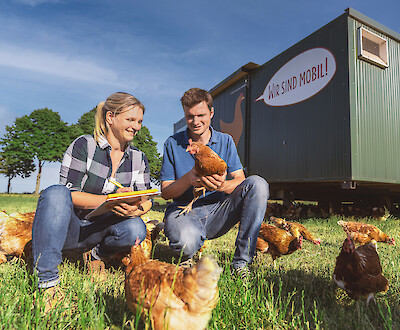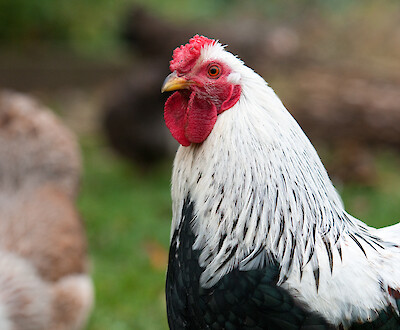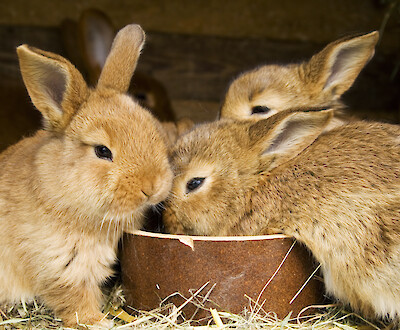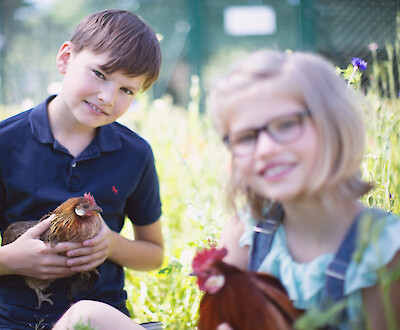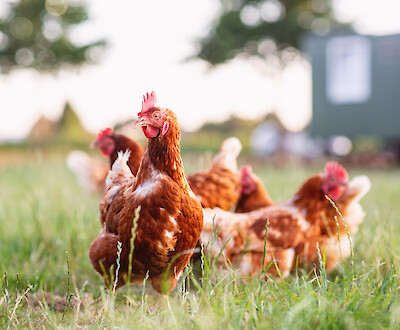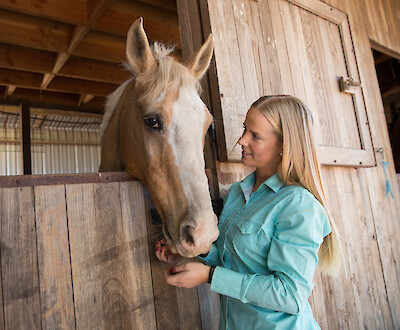Keeping quail in your own garden: Part 1
Quails: The most popular quail species and what makes them special
More and more people are getting enthusiastic about quail. No wonder. The sociable, lively, small chicken birds are generally easy to care for and uncomplicated to keep. While the great variety of ornamental quails is primarily concerned with external characteristics, the breeding of laying quails is primarily aimed at a high number of laid eggs. Which type of quail is most suitable for you depends largely on your expectations: Do you want to keep them for ornamental purposes? Or is a delicate quail egg laid every day a priority? The following article provides information about the most popular quail species and which quails are best suited for beginners in hobby quail keeping.
Not all quails are the same
Quails are the smallest members of the order of chicken birds. Their size is only about 14 to 29 cm. Depending on the quail species, they weigh between 45 and 500 grams. Although they can fly, quails prefer to stay on the ground and only use their wings in emergencies. It is estimated that there are about 100 different quail species worldwide, of which the majority have been created through breeding.
With regard to their use, a distinction is made between ornamental quail and laying or fattening quail. The fact that quails are becoming more and more popular both as ornamental birds and because of their delicate eggs is due to their reserved, lovable character and the conditions under which they are kept. Compared to chickens, quails need less space and are much quieter.
Zoologically, quails can be divided into the pheasant family (Latin Phasianidae) and the tooth quail family (Latin Odontophoridae). While the pheasant-like quails are distributed worldwide, the tooth quails have evolved independently from the pheasant-like quails in America and Central Africa.
Systematics of the pheasant-like quail family
The pheasant family is subdivided into the four genera Frankolin quail (lat. Perdicula ), Earth quail (lat. Coturnix), Ostrich quail (lat. Rollulus) and Pearl quail (lat. Margaroperdix). The following diagram gives an overview of the biological classification of quails.

Laying quail or ornamental bird - What is the purpose of keeping quail?
The choice of quail species depends crucially on why you want to keep quails. Are the quails mainly for ornamental purposes? Is the purpose of keeping them to enjoy delicate eggs every day? Or is it to build up a hobby breeding with the aim of presenting the animals at breeding shows and exhibitions?
The tooth quail species found in this country, such as blue-scaled quail, Virginia quail, Montezuma quail and Gambel's quail, are, like the vast majority of quail species, mainly kept for ornamental purposes. They are usually not suitable for egg production and only to a very limited extent for meat production. The jungle quails belonging to the genus Frankolin, the rain quails belonging to the genus Earth quail, the ostrich quail and the Madagascar pearl quail are also mainly kept as ornamental birds. Only the Japanese laying quail is bred for eggs and meat.
The most popular ornamental quails
They decorate aviaries with their splendidly coloured and patterned plumage: as early as the 11th century, quails were kept in Japan and China in particular for ornamental purposes and as songbirds. Ornamental quails are also descended from wild quails, but have been domesticated for a long time. The following list goes into more detail about the most popular ornamental quail species.
-
The name tenebrosus quail refers to a dark, almost black colour form of quail. The basic plumage of these birds is black with little brown and small white areas of varying sizes. Quails of this old colour type are not only relatively rare, but also very much appreciated as a special feast for the eyes. Even the chicks of these quails are almost black. Rooster and hen appear almost identical in this colour scheme, so that sex determination is done via a cloacal test.

-

With their magnificently marked plumage, the male Montezuma quails are considered a special jewel among the ornamental quails. The cocks have a striking black and white facial mask and conspicuous black and white spots on the breast. Montezuma quails are also distinguished by their character: They are considered very relaxed and show intense social behaviour when kept in a species-appropriate group, regularly preening each other and sleeping in the quail window, a circular formation typical of quail that serves to protect them from prey predators. Montezuma quails reach a size of up to 23 cm and weigh 193 g on average.
-
A distinctive feature of the ostrich quail is its extravagant appearance - especially for the cocks. Especially in sunlight, the dark greenish shimmering black plumage and a fiery red feather bonnet of the cocks come into their own. The plumage of the female birds is olive to grass green. The eye wax skin is bright red in all ostrich quails. Ostrich quails, which originate from Southeast Asia and belong to the pheasant family, are much more demanding to keep than other ornamental quails. They need a humid, tropical climate and are not hardy. Even in winter, the exotic ostrich quails need temperatures of at least 10°C and ideally also the usual tropical humidity. The attractive animals reach a body size of up to 27 cm and a weight of up to 190 g.

-

A distinctive feature is their particularly beautiful pattern, which is reminiscent of fish scales. In the upper breast area, the plumage has different shades of blue-grey, which change to a bronze tone towards the bottom. On their head, the birds wear a cheeky white cap of feathers that stick out slightly upwards. Blue-scaled quails belong to the tooth quail family. They reach a size of up to 29 cm and have a weight of up to 202 g.
Which quail species are suitable for hobby keeping for beginners?
For beginners in the hobby keeping of quails, the Japanese laying quails are best suited. Ornamental quails such as the bouquet quail have very specific husbandry requirements: They are not hardy and only thrive in a tropically humid climate. Japanese laying qu ails, on the other hand, are not very demanding, so keeping them is quite easy. They are winter-hardy, which means that the quails can stay outside even in colder temperatures. The animals usually develop great trustfulness and also look beautiful in their different colourings (different colours of the plumage). In addition, the quails reward their humans with a high number of their delicate eggs.
Quails for the production of eggs and meat
Those who want to keep quails to enjoy eggs and meat usually opt for laying quails. More precisely, for the Japanese laying quail. The Japanese laying quail is by far the most common type of laying quail. There are three different breeding lines of Japanese laying quail, which belong to the earth quail family:
- the light line
- the medium line (laying quails)
- the heavy line (fattening quails)
The light line are laying quails, which are closest to the original Japanese wild quails. They weigh up to 240 grams and their eggs average 11 to 12 grams. The aim of this breeding is a high laying performance.
The medium line is bred as a "dual purpose" type for high laying performance and fattening weight. The majority of the laying quails available at markets and from breeders come from the middle line. With a weight of up to 350 g and a laying performance of up to 300 eggs per year, these animals are considered the ideal laying quails. The egg weight is about 13 grams.
The heavy line is a special breeding. The focus is on a high body weight, as it is mainly used for quail fattening. The quails of this line weigh up to 500 grams. In general, a tendency towards increasing weights can be observed in all three breeding lines.
Japanese laying quails are also available in different colours. This leads to an increasing popularity of the heavy line also as ornamental quails.
Wild quail
There are over 100 wild quail species worldwide, many of which have not yet been studied. In Europe, the free-ranging qu ail (lat. Coturnix coturnix) is protected under the EU Birds Directive. In the red list of endangered species, the quail is listed in the category "pre-warned list".
Highly prized delicacy: Quail eggs
In hobby farming, quails lay up to 200 eggs a year. With optimal husbandry conditions, the best possible nutrition and good care , laying quails can even reach 300 eggs per year. This corresponds to five to six eggs a week! The laying performance decreases with age, but with an average lifespan of three years, it makes sense to regularly replenish with young animals.
Quail eggs are not only captivating because of their beautiful, variously speckled appearance, they are also considered healthy because of their ingredients. The eggs are rich in minerals and trace elements such as potassium, magnesium, calcium, zinc and selenium. In addition, they contain vitamins A, E, D and K as well as all the vitamins of the B group. The content of essential amino acids also makes quail eggs particularly valuable for a balanced diet. It is also good to know that the fats in the yolk of quail eggs consist of 52 % mono- and polyunsaturated fatty acids, which are particularly healthy.
Conclusion: The most popular quail species and what makes them special
- Quails are the smallest birds in the order of chicken birds.
- Quail keeping is a fascinating hobby that is becoming more and more popular.
- For newcomers to quail keeping, Japanese laying quails are the most suitable.
- Japanese laying quails are characterised by their calm character and great trustfulness.
- Due to their often specific husbandry conditions, ornamental quails are only recommended when experience in quail husbandry is already available.
- The aromatic eggs of laying quails are considered a highly prized delicacy.
- Depending on the type of husbandry, a laying quail lays 100 - 300 eggs per year.
FAQ
-
The average life expectancy of quails is between three and five years. Occasionally, individual animals reach an age of six years.
-
Free-ranging quails have a laying pause during the winter months. In domesticated husbandry in quail houses or enclosures, artificial light and house heating also stimulate laying activity in winter. However, the lack of a natural regeneration phase affects the life expectancy of the animals.
-
Not all quail species are hardy. Japanese laying quails are a hardy breed. With appropriate housing conditions in the form of a hutch for retreat, Japanese laying quail can cope with temperatures as low as minus 15 degrees.
-
A possible disadvantage could be that it is not recommended to keep quails in an enclosure together with chickens. Both the behaviour and the needs of the animals differ significantly. Quails, for example, need secure outdoor access and a very protein-rich diet. Chickens need much more space and appreciate having a large run.
-
Quails are considered easy to care for and uncomplicated to keep. The basic equipment consists of a quail house with secure free range, bedding and sand for sand bathing, special quail feed such as deuka Legewachtel-Mix or deuka Legewachtel feed including a feed dispenser and a drinking trough.
-
There are various ways to purchase live quails. Besides buying directly from the breeder, there are numerous offers on the internet, e.g. at deine-tierwelt.de. There are also many opportunities to buy quails at shows. Current dates for national and regional shows can be found on the website of the BDRG (Bund Deutscher Rassegeflügelzüchter e.V.). In addition, the BDRG also offers an animal exchange on its website.
-
Compared to other poultry birds, quails require a higher nutrient density in their feed, as they can only consume small amounts of feed in relation to their own weight. Special feed for laying quails is therefore characterised by a high protein (23%) and calcium content (over 4%). It is also important that the feed is beak-friendly and small-grained to ensure that nutrients are absorbed without loss.
Contact person

Barbara Wefers
Contact person


